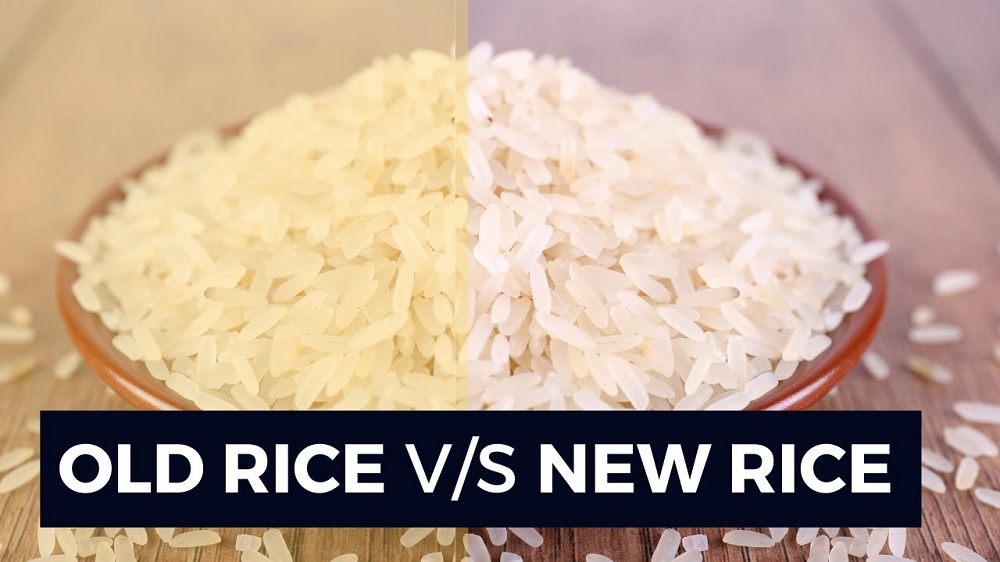Have you ever reached for a bag of rice in the back of your pantry and wondered if it still tastes good? Don’t be afraid, rice lovers! This blog post will answer all your questions about “stale rice,” including how to distinguish it from fresh rice and whether it is safe to eat.
Is it safe to eat old rice?
Rice in good conditions can be preserved for a long time, about 4-5 months. However, if influenced by many external factors, they can be faster. Although not of the best quality, old rice does not necessarily make you sick. However, its quality will decline and these will be the signs that will tell you that.

- Loss of aroma and flavor: Fresh rice boasts a pleasant, nutty scent, jasmine rice. Over time, this aroma fades, sometimes replaced by a musty odor.
- Deterioration of nutrients: Rice loses some of its vitamins and minerals as it ages.
- Change in texture: Freshly cooked rice is fluffy texture and chewiness. Old rice can become dry, hard, or even mushy.
- Increased risk of weevils: These tiny pantry pests are drawn to stored grains. While not a major health hazard, weevils can reduce nutritional value and make the rice unpleasant to eat.
Check with the naked eye
Fresh and new rice often has a pearl-like beauty, smooth and transparent.
- Color: Uniform pearly white across the beads. Avoid cases where the rice is stained or has prominent yellow patches.
- Whole grains: Whole grains have few cracks or flakes. Old rice may break or crumble.
- Transparency: Hold a handful of rice up to the light. Fresh rice will be slightly translucent, while old rice may be opaque.
Check by smell
Fresh rice has a characteristic, pleasant aroma like the scent of jasmine. The scent is faint and not mixed with many other impurities such as: mold, dust,… Cooked rice grains are smooth, separated and have a pleasant chewiness. The water-rice ratio may need to be slightly adjusted for optimal results.
Old rice: Little to no aroma or a musty odor indicates a possible storage problem.Usually produces rice that is less sticky, drier and less fragrant. It may cook unevenly or become mushy in some places
Refer immediately to the rice packaging
Sometimes, packaging clues can be helpful:
Harvest date: Before leaving the factory, new rice is often packaged near harvest time. Newer rice is often packaged closer to harvest.
Storage conditions: If the packaging allows viewing, check for signs of moisture or insect damage.
Make the most of old rice
Even if your rice isn’t the freshest, you don’t have to throw it away! Here are some creative ways to utilize old rice:
- Thickens soups and stews: Stale rice adds thickness and texture to hearty soups and stews.
- Rice cakes or porridge: The slightly drier texture of stale rice is perfect for these comforting dishes. It absorbs liquid well, creating a thick, creamy mixture.
- Grind into rice flour: Turn old rice into a versatile ingredient by grinding it into flour in a food processor. Use rice flour to make pancakes, waffles or bread.
- Fermentation method: In some cultures, old rice undergoes a transformation process. It is fermented to create alcoholic beverages or unique spices.

Store rice properly
To ensure the best quality and minimize the risk of spoilage, here are some storage tips:
- Airtight containers: Invest in airtight containers to keep in moisture and keep out pests.
- Cool and dry: Store rice in a cool, dry place, away from direct sunlight or heat sources.
- First in, first out: Implement a “first in, first out” system for your rice warehouse. This ensures you always use the oldest rice first.
By understanding how to identify old rice and using proper storage techniques, you can ensure that you’re always getting the most out of this versatile grain. Remember, even if your rice isn’t the freshest, there are still ways to enjoy it.



